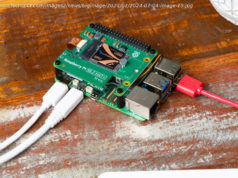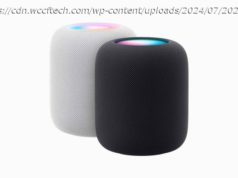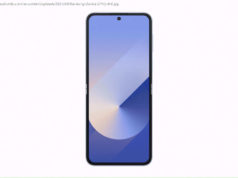Realme on Tuesday launched its second smartphone in India, the Realme 2, which is also the cheapest phone to sport the notch. We review the device to find out whether it is worth your money.
It’s not easy for new brands to make a dent in the Indian market right now considering how competitive and crowded it already is. Oppo took a chance and launched a sub-brand called Realme earlier this year to target the affordable segment. And because it came with Oppo’s backing, there was a lot of expectation that the company’s first smartphone should do well. And the Realme 1 did exceed expectations, packing some powerful hardware and good looks at a really competitive price point. A little over three months and the company is already out with its second phone, the Realme 2, and the device is all about bringing features that are popular in 2018.
Before we get into the review, it’s important to see the Realme 2 not as a direct successor, but as a version of the Realme 1, even though the name would suggest otherwise. The reason I say this is because while the Realme 2 brings a notch display, a dual camera setup, a fingerprint sensor and a bigger battery, which are definite upgrades, it also takes a step back with a downgraded processor and HD resolution. It’s a phone that tries to fulfill the consumer’s wishes but at the same time sacrifices some important features as well. And it comes at a price that is similar to the Realme 1 at Rs 8,990. So is the cheapest notched phone in India worth buying? Let’s find out.
In many ways, the Realme 2 now gets everything the Realme 1 was missing from a design perspective. The first iteration was mainly criticised for not adding a fingerprint sensor. You get that now on the back of the device in addition to face unlock. Both are extremely fast, snappy and mostly accurate. Next up is the dual camera setup on the back which is an upgrade over the single sensor on the Realme 1. Completing the design is an edge-to-edge notched display which keeps the Realme 2 more up-to-date with the industry trend, although the 18:9 display on the Realme 1 was appreciated as well.
The Realme 2’s design is largely derivative and familiar to the Oppo family. The front notch display looks similar to the Oppo A3s and Oppo F7. You have the glossy rear plastic panel with diamond patterns on top which again looks similar to the A3s and F7. This comes in a choice of Red, Black and Blue options. My review unit was in red and it’s pretty flashy and will call some attention if that’s what you’re looking for. The other two options should be more subtle and quiet in comparison. The plastic body also helps keep the weight of the phone on the lighter side of things despite a large battery housed inside. It’s also easy to hold in one hand because Realme has kept the footprint similar to the Realme 1 despite the increase in the size of the display.
The buttons around the frame have a nice tactile feel to it and the fingerprint sensor on the back is extremely fast at unlocking the device. However, the sensor sits flush against the rest of the back, which makes it difficult at times to reach it in one shot. I would have liked the entire body to have a more seamless and smooth feel to it, but the glass kind of just sits there on the top uncomfortably and makes it look disjointed from the rest of the phone. The Realme 2 has a sturdy build to it and should withstand the occasional drops and pressure. It also supports a 3.5mm headphone jack and a single speaker grille that isn’t too loud and clear.
As I said earlier, the notched display makes the Realme 2 more 2018 than the Realme 1. The latest phone gets a bigger screen and a larger screen-to-body ratio (88.8 per cent) with limited bezels. All of this is great if you’re looking for a low-cost notched phone, because the Realme 2 is one of the cheapest with a display cutout right now. That being said, the first big noticeable downgrade here is that the Realme 2 comes with an HD+ (720×1520) resolution instead of a FHD+ resolution that the Realme 1 brings at this same price point. The pixel density is also a poor 271ppi, which means colours on the screen don’t look deep and punchy.
While a notched display aims to offer a more immersive viewing experience, it misses the mark if the resolution is poor. Watching videos on YouTube and Netflix will look grainy and pixelated and so does playing games. It’s not the best experience overall but it’s not bad for the price you’re paying. Brightness levels are good and the display is quite visible under direct sunlight. But we now move on to what is the most important aspect about the display – the notch.
I’ve said it a few times before, if the software and apps are not optimised for the notch, it can really get you to hate that forehead. I recently reviewed the Nokia 6.1 Plus and found that the notch implementation was great because the cutout never ate into any video I was watching or any game I was playing. In such situations, the entire status bar would go black and you would get a more traditional 18:9 display, so you really don’t mind the notch. But the Realme 2 gives the same poor notch implementation as the Oppo A3s. Oppo is yet to properly optimise its ColorOS skin for the notch and it shows.
The notch on the Realme 2 will eat up some of the viewing area because videos and games stretch all the way. It’s the same as on the iPhone X as well, and it’s widely known that Oppo’s skin has some glaring similarities to iOS. So some of the text gets eaten in PUBG and scrolling through web pages and texts in landscape mode is surely not the best way to go.
One of the reasons the Realme 1 was impressive for its price was because it offered some pretty powerful hardware that included a Helio P60 chipset, which is one of the better MediaTek processors out there, along with up to 6GB of RAM. With the Realme 2, the company decided to ditch MediaTek, choosing an entry-level Qualcomm Snapdragon processor instead. It is powered by an octa-core Snapdragon 450 chipset. This is coupled with up to 4GB of RAM which is the variant I received for the review.
As far as day-to-day usage is concerned, you will notice some lags and stuttering when browsing through social media apps like Facebook and Twitter. Apps take some time to load, especially heavy gaming ones like PUBG. The response time between tapping on an app and opening it will see some delay as well. The processor should handle basic tasks like messaging and some multitasking well, but it starts to show issues if you push it beyond that point. Despite an AI gaming assistant, the Realme 2 isn’t a phone for gaming. Low resolution aside, the phone starts to lag and stutter quite a lot when playing games like PUBG, that too with the default graphic setting on low. The performance is a stark contrast to the Realme 1 which was smooth and handled mostly everything with ease and no signs of lag.
The Realme 2 ships with ColorOS 5.1 skin on top of Android 8.1 Oreo. Oppo’s custom software comes with a few notable features that includes Smart Assistant, split-screen multitasking, Game Mode and some new security layers including the ability to make app payments and purchases via face recognition. These are some handy new features, but it doesn’t stop the UI looking more and more like Apple’s iOS. Right from the app icons to the multitasking screen to the camera app, Oppo’s skin will make you feel like you’re using an iPhone. And that would still be fine if things worked smoothly, but there is still some stuttering to be found while scrolling through the UI and pulling down the notification menu.
Oppo’s software continues to bring some annoying features like the inability to swipe to remove notifications. You still have to swipe and then press the delete option to remove a notification or hit the “X” at the end to remove them altogether. The app icons are a mix of square and rounded shapes and there’s a general lack of uniformity.
That being said, the software is still one of the more bloatware-free skins out there. You won’t find a lot of preloaded apps which makes sure it won’t start to weigh down on the device after a while.






